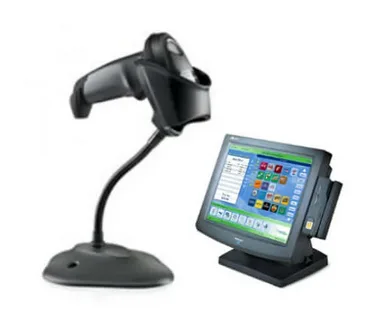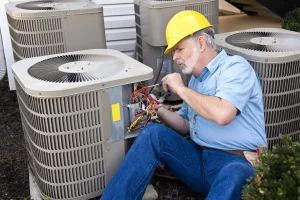Dry weather, scorching heat, insanely high temperatures, and bushfires are typical fire danger seasons in Australia. Make no mistake: it is so important to be extra careful and ready during this season. That’s because fire can spread fast and put people, homes, and nature at risk.
Therefore, having a clear fire plan, reliable backup communication options, and emergency supplies are important for safety. Talking about emergency supplies, power solar generators are super handy in emergencies as they provide much-needed power when the electricity goes out.
Solar panel generators ensure that essential items like lights, phones, and fridges keep working. However, it is equally important to consider reliable and high-end companies like Jackery when investing in power solar generators; Jackery provides best power banks Australia.
This article is about how you can prepare for fire danger season in Australia and how portable power solar generators can help.
Table of Contents
Understanding Fire Danger Season in Australia
First things first, it is important to understand what fire danger season is. The fire danger season depends on the region you are living in. In northern Australia, it typically lasts from June to November, when grasses have dried out.
In the central regions, the season usually runs from mid-October to mid-January, after a dry winter and early spring. In southern Australia, the fire season is from December to February, when summer heat dries out the vegetation. However, bushfires can occur at any time of the year, as local conditions can sometimes cause fires to become dangerous.
What Triggers or Affects Bushfires During the Fire Danger Season in Australia?
Australia is one of the most fire-prone countries due to several factors. The country’s hot and dry climate, especially during summer, plays a massive role.
High temperatures, low rainfall, and dry air all contribute to making vegetation dry and easy to catch fire. Strong winds then spread these flames over large areas and make the fires more intense. Dry soils also increase the risk, as they make plants even more flammable.
Both natural and human factors can start bushfires. Lightning strikes are a common natural cause. On the other hand, human activities, like discarded cigarettes, electrical faults, or arson, can also start fires. Hot, dry, and windy conditions do the icing on the cake and create the perfect conditions for fires to spread quickly.
What are the Impacts of Bushfires?
Bushfires can have serious effects on people, property, and the environment. They can lead to
- Loss of life
- Destroy homes and businesses
- Cause lasting damage to ecosystems
Power outages are common during bushfires, especially in rural areas. What’s more, these outages disturb or even cut off essential services like electricity and communication. Smoke can also travel far, which affects air quality and causes health issues.
How to Reduce Fire Risks and Prepare for Fire Danger?
The next question is how you can minimize the fire risk. You can start by focusing on fire-resistant materials, clearing vegetation, and improving fire safety measures in and around your home.
1. Clear Vegetation and Debris Around Your Home
Start by removing dead vegetation such as leaves, branches, and undergrowth. These materials can fuel a fire, especially when located near trees.
Trim back tree limbs that hang over your home, and ensure trees are at least two meters above the ground. This helps prevent fires from reaching the canopy.
Clear a 20-meter zone free of leaves, dry grass, and other flammable materials to create a defensible space around your home. This will help slow the spread of fire.
2. Use Fire-Resistant Materials
Building your home with fire-resistant materials, such as metal or concrete, can significantly reduce fire risk. Focus on fire-resistant roofing, windows, and walls to prevent the fire from spreading into your home.
It is also essential to seal any gaps around windows, doors, or floors, as tiny flames or embers can enter through small cracks. Make sure to seal cracks around the roof and vents to avoid any openings that could allow fire to enter.
3. Install Sprinkler Systems or Hoses
Installing a sprinkler system around your property can help protect it from heat and flying embers. The system should use metal fittings, as plastic can melt during intense heat. It is also a good idea to have a backup water source with at least 5000 litres of water. If power goes out, consider using a portable pump to keep your sprinkler system working. You can also use the portable solar generator to power the pump.
4. Protect the Roof and Underfloor Areas
Choose metal roofing for better fire protection. Make sure all openings and vents are properly sealed to prevent fire from entering through the roof.
Clean the roof and gutters to remove leaves and debris, which can easily catch fire. Additionally, clear any flammable materials like firewood or timber from under your home.
5. Landscaping for Fire Safety
Choose fire-resistant plants for your landscaping. Plants with fleshy leaves or high moisture content are less likely to catch fire. Space trees and shrubs in your garden to prevent a continuous canopy, which could allow a fire to spread. Lastly, clear debris from your garden regularly to reduce fire risk.
Why is an Emergency Plan Important to Battle Fire Season?
It is necessary to have an emergency plan for the safety of individuals and families. Proactive planning helps reduce the risks and improve survival chances during a fire emergency. Key elements of a well-prepared emergency plan include evacuation routes, safe shelters, and survival kits.
1. Evacuation Routes and Safe Shelters
Planning evacuation routes in advance is vital. This ensures everyone knows the fastest and safest way to leave the area in case of fire. Evacuation routes should avoid areas with high fire risk.
Identifying safe shelters is equally important. These could include community centres or designated fire shelters. It is also important to know where the shelters are if evacuation becomes necessary.
2. Survival Kits
A survival kit is another critical part of the emergency plan. The kit should contain items like non-perishable food, water, first-aid supplies, a flashlight, and other essentials. Having these items ready can help in situations where there are power outages or delays in evacuation.
It is also advised to prepare for prolonged emergencies. Apart from first-aid kits, keep a stock of important medications the family members use. What’s more, having a power solar generator will be even better to tackle prolonged power outages.
3. Communication Plans
Clear communication is crucial during an emergency. Fire conditions can disrupt communication, so a reliable strategy is essential.
Setting up meeting points where family members can gather is a good idea. It is also helpful to use multiple communication methods, such as mobile phones or social media, to stay in touch.
It is also a good idea to designate a family member as the main point of contact. This will ensure that everyone checks in and confirms their safety.
The Role of Power Solar Generators During Fire Danger Season
It doesn’t need a genius mind to understand that having a reliable power source is essential during bushfire seasons when power outages are common.
These outages can cause major problems, such as loss of communication, food spoilage, and lack of medical support. This makes safety more difficult to maintain.
That is why it is important to have an alternative power source. Power solar generators offer a reliable solution to keep essential devices running and ensure safety during emergencies.
The Growing Popularity of Power Solar Generators
Solar technology is becoming more affordable, which makes solar generators an increasingly popular and cost-effective backup power option for households.
Users can recharge these generators using solar panels or other charging methods, which provides flexibility and convenience.
They are reliable, safe, and environmentally friendly, which makes them an excellent choice for emergencies, off-grid living, or outdoor activities.
Solar panel generators’ portability, ease of use, and eco-friendly designs make them a valuable investment for anyone seeking reliable and sustainable power during emergencies.
Power Solar Generators are a Safer and Cleaner Alternative
Portable power solar generators are a safer and cleaner option compared to traditional gasoline-powered generators. Unlike regular generators, portable solar power generators don’t release harmful carbon monoxide, which makes them safe to use indoors.
They are also quieter, require less maintenance, and are better for the environment. This makes them a good choice not only for emergencies but also for everyday use.
Here are the top reasons why power solar generators are a must-have asset during the fire danger season in Australia.
1. Evacuations and Safety
Solar generators are important for keeping communities safe during bushfires. They provide power for lighting, which helps emergency teams see evacuation routes and assembly points, especially at night. Solar generators can also power tools to clear obstacles, making safe evacuation easier.
Once people are in evacuation centres, these generators continue to help. They provide power for lighting, heating, and cooling systems to make sure everyone stays comfortable. They also keep communication systems working, which allows authorities to share important updates and instructions.
2. Keep Essential Devices Running
During bushfires, it is important to keep communication devices charged. Solar generators help ensure phones, laptops, and radios stay powered. This will help you get emergency updates, learn about fire conditions, and keep in touch with loved ones when the grid is down.
3. Powers Cooling Systems and Ventilation
Imagine battling bushfires in the presence of scorching heat, and there is no power. This is where power solar generators become super useful. They can run cooling systems like fans or air conditioners to provide relief from the heat and improve air quality inside your home.
Jackery Solar Generators—Reliable Companions in Emergencies and Off-grid Living
The last thing you want during the fire season is a low-grade backup power source. That is why Jackery offers power solar generators that are perfect for any situation. Jackery power solar generators are tailor-made to provide prolonged backup in fierce fire seasons, but you can also trust them for camping, travelling, or dealing with a power outage.
The Jackery Solar Generator 1000 Plus has a 1264Wh capacity and 2000W output. This means it can power 99% of your devices. It is great for home backup to help with bushfire emergencies or outdoor activities. You can even expand its capacity up to 5kWh, giving you up to 3 days of backup power. You won’t have to worry about losing power with ultra-fast solar charging. Its LiFePO4 battery lasts up to 10 years, which provides long-lasting reliability. You can also control and monitor it using the Jackery App.
If you need more power, the Jackery Solar Generator 2000 Plus is the better solution. It has a 2042Wh capacity and can power devices up to 3000W. You can expand its capacity up to 12kWh, perfect for off-grid living or long-term backup. Also, it can be charged to full within 1.7 hours through an AC adaptor and in 6 hours with Jackery SolarSaga solar panels 100W x 6. With the Jackery Solar Generator 2000 Plus, there is no need to worry about power outages during fire season!
Conclusion
As climate change is expected to make bushfire conditions worse in the future, it is even more important for communities to plan and prepare effectively to reduce the risk and impact of future fires. To be fully prepared for the fire danger season, do not hesitate to get a power solar generator! Visit Jackery’s website now to learn more about their solar power solutions!



